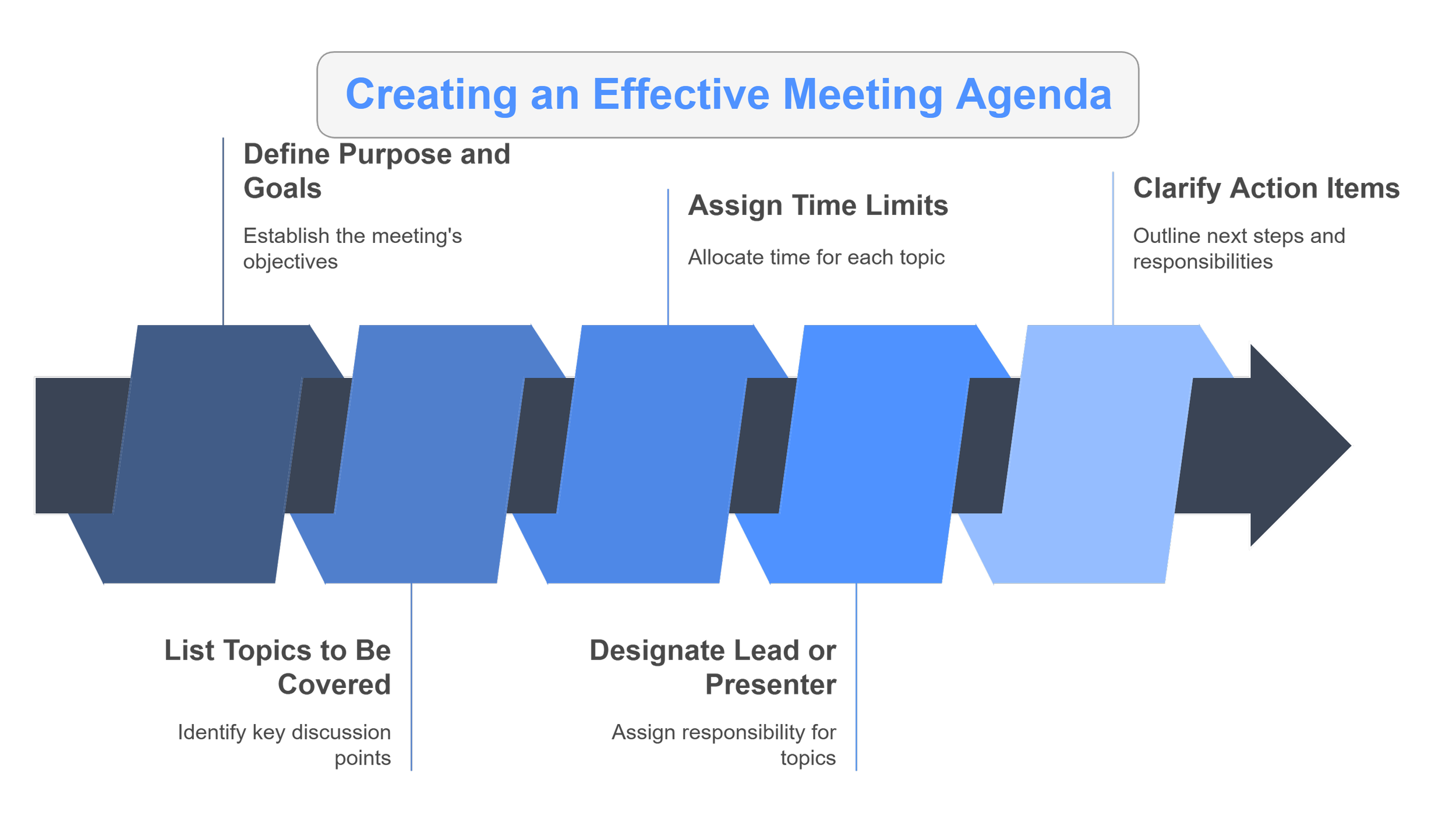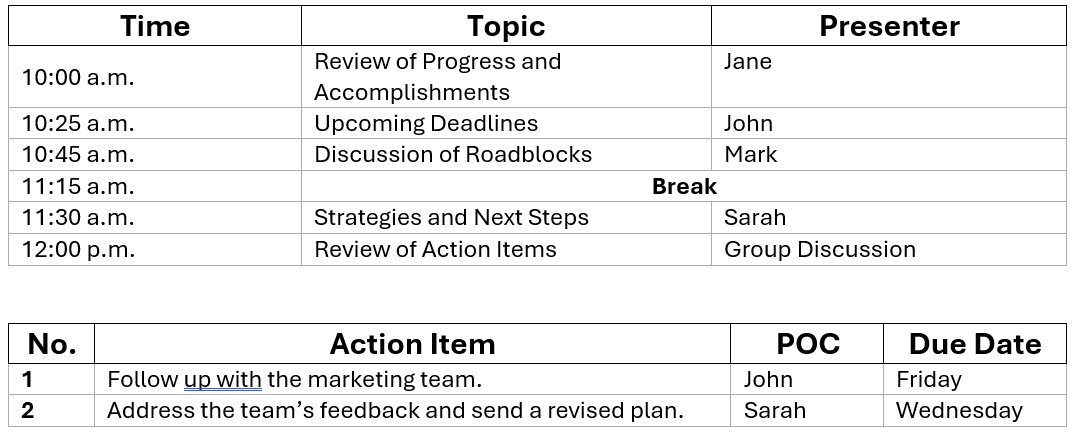How to Create an Effective Meeting Agenda
Meetings are an important part of every organization, and an effective agenda is a guard against a meeting becoming unproductive and futile. A well-organized agenda helps participants understand the meeting’s purpose and what to expect, and also allows participants to prepare in advance, leading to productive discussions and actionable outcomes. In this post, we will outline the best practices for creating successful agendas.

1. Define the Meeting’s Purpose and Goals
Before drafting the agenda, it’s important to clearly define the meeting’s purpose. Here are a few helpful questions to keep in mind. Hover over each question to see the answer.
-
Q
What are this meeting’s key objectives?
AThe purpose or objective could be to make decisions, solve problems, share updates, or simply brainstorm ideas.
-
Q
Are all potential presenters notified and prepared?
AEnsuring presenters are prepared helps avoid awkward, embarrassing moments by not catching anyone off-guard.
-
Q
Are there any time constraints?
AConsidering this may help prioritize agenda topics.
-
Q
What do we hope to accomplish?
AEstablishing a clear goal helps guide the agenda’s structure and ensures the attendees stay focused on what truly matters.
In addition to the steps we’ll outline below, it is helpful to remember to send the agenda to meeting participants in advance, include time for questions and group discussion, and be flexible yet focused.

2. List the Topics to Be Covered
Once you know the purpose, it will be easier to outline specific topics for discussion. Try to keep the list of agenda topics concise, but be sure to include all the important ones and keep a general theme—too many different topics can derail and confuse meeting participants.
For example, if the meeting objective is to provide a project update, the topics could include—
- A review of progress and accomplishments
- Upcoming deadlines
- Any anticipated challenges or roadblocks
- Strategies and next steps
- A review of action items
3. Assign a Time Limit to Each Topic
One of the biggest pitfalls during a meeting is not having enough time to appropriately discuss a topic, or any guidance on time at all. To prevent this, specify start and end times and assign a specific time limit to each agenda item. This encourages presenters to stay focused and ensures no single topic dominates the discussions. A helpful tip for long meetings is to include short breaks every few hours.
For example:

4. Designate a Lead or Presenter for Each Topic
Assigning a lead or presenter for each topic ensures accountability and helps keep the discussion organized. The designated person will present the topic, guide the discussion, and answer questions. It is best practice to assign someone who is well-versed or responsible for that topic. Providing the topics allotted times also allows the presenter to prepare for their part of the meeting.
For example:

5. Clarify Action Items and Next Steps
At the end of the meeting, it is crucial to clarify any action items and next steps. This way, meeting participants are all on the same page and know what needs to be done. Action items should include actionable tasks, an assigned responsible party, and deadlines. If no clear actions are defined, the meeting may end without tangible results, making it easy for important tasks to fall through the cracks.
For example:

Conclusion
An effective agenda can significantly enhance the meeting’s productivity and outcomes. By clearly defining the purpose, setting realistic timeframes, prioritizing key topics, and ensuring all necessary materials are prepared in advance, you will set your team up for success! The next time you prepare an agenda for a meeting, use the steps outlined above to create a valuable and impactful agenda.
Happy meeting planning!
Need help with meeting support?
PAI Consulting can help you take your meetings to the next level.
Contact us today for a consultation and let our meeting support experts help your meetings succeed.
Contact us for a consultationWhether you are in the Government or private sector, PAI Consulting can help you achieve smooth meetings by setting clear objectives and next steps, encouraging participant engagement, properly managing time, and taking advantage of available technologies. With these tips and more, we can help you avoid any hiccups, create a streamlined meeting, and achieve your organization’s goals.
Back to Meeting Your Needs home.
Do you have questions or concerns about meetings? Share them with us!
PAI Consulting | Helping you succeed. Learn more.
Any opinions expressed in this article are those of the author and not the opinion of PAI Consulting. In addition, this article may contain links to third-party websites. PAI Consulting does not endorse or make any representations about them, or any information, software, or other products or materials found there, or any results that may be obtained from using them.
